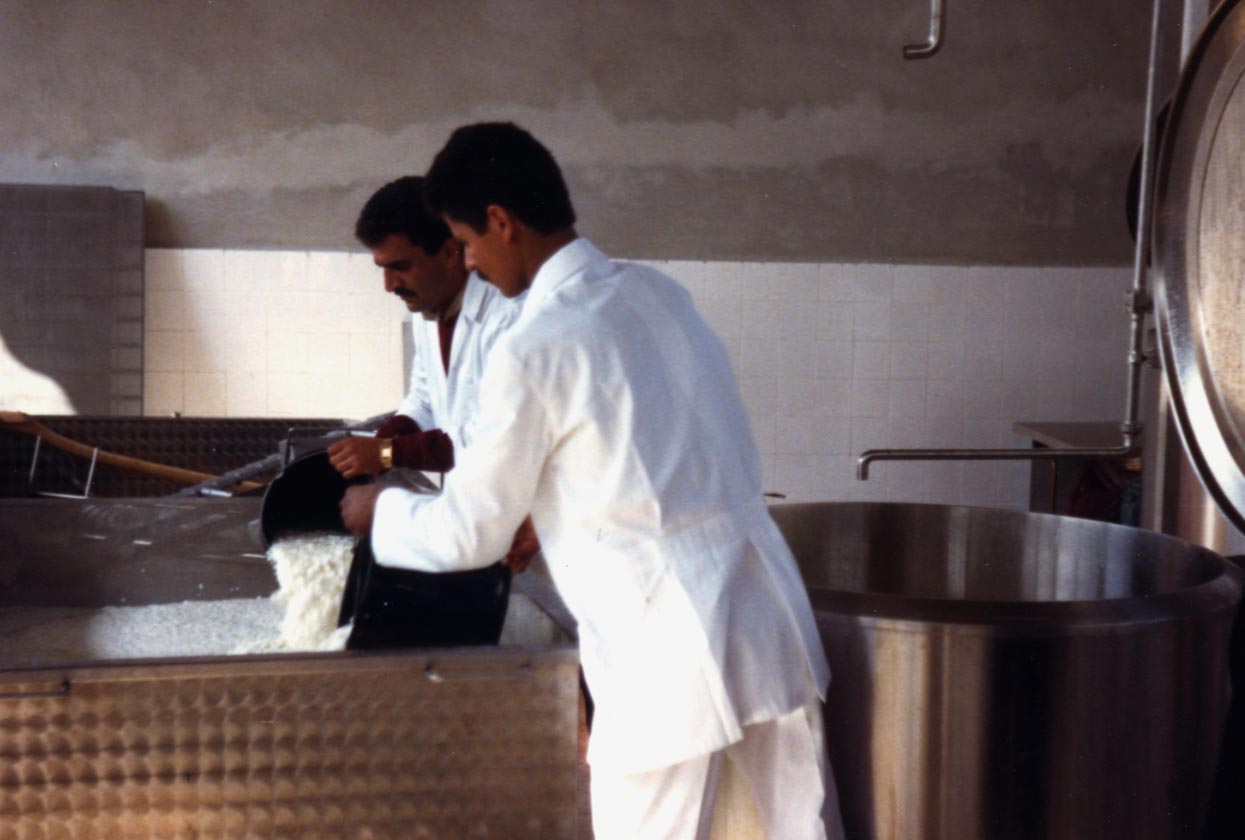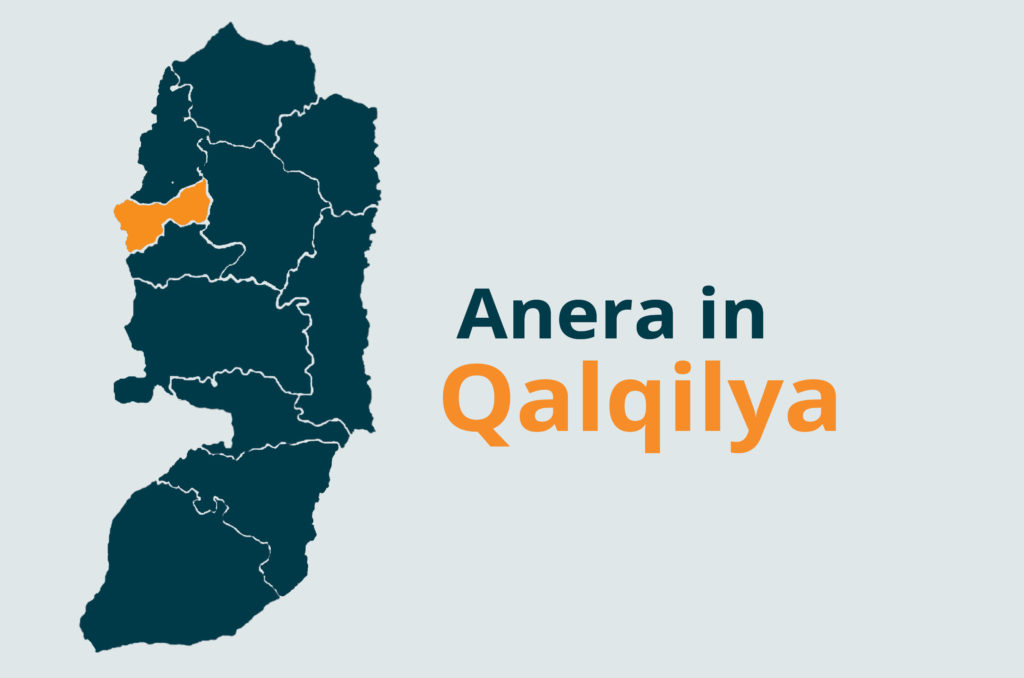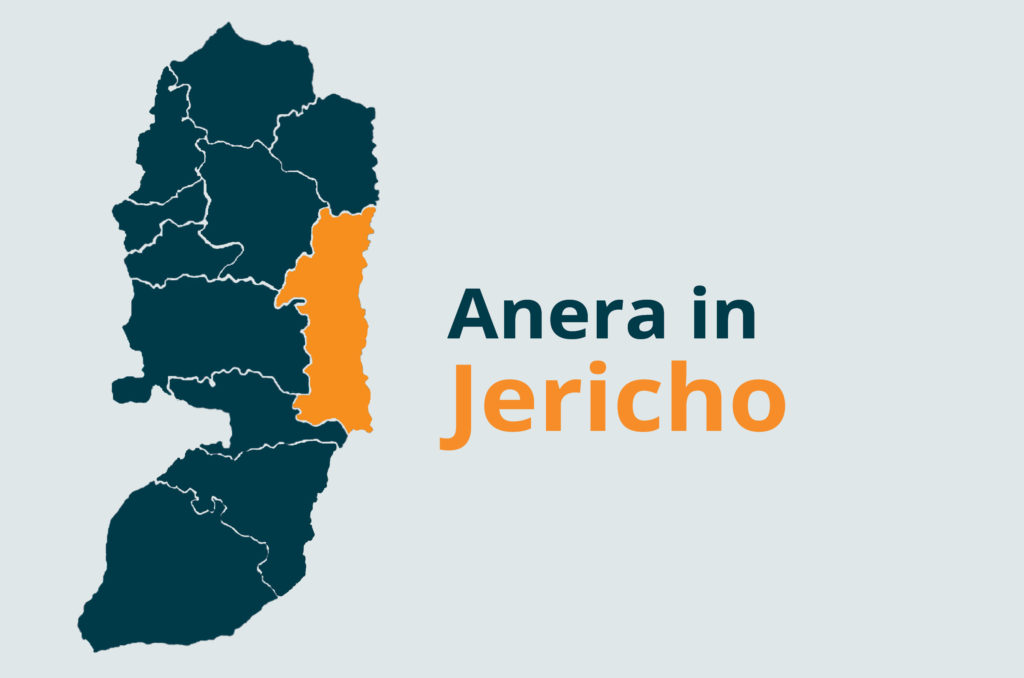Aug, 2016
With a population of over 700,000, the Hebron Governorate is the largest governorate in the West Bank in both size and population.
Hebron Governorate | محافظة الخليل
The Hebron Governorate covers the southern tip of the West Bank with a total of seven cities, including the eponymous main city, eighteen towns and two refugee camps. The governorate also contains more than 100 Bedouin villages and has a total of 13 municipalities.
Today, Hebron and its environs serve as an important Palestinian trade hub — the commercial capital of the West Bank. The region is famous for its grapes and dairy products. It is also known for its traditional glass blowing and pottery production and is home to the only remaining keffiyeh factory in Palestine.
In the bustling capital city of Hebron, an ancient Old City reveals winding stone pathways and a souk that survives to this day. One of the oldest continually occupied cities in the world, Hebron also holds significance in Judaism, Christianity, and Islam as the burial place for Abraham and his family in the Cave of the Patriarchs, under the historic Ibrahimi mosque. It is also a flash-point of conflict.
The Old City of Hebron, with its well-preserved structures dating back to the Mamluk and Ottoman eras, is a UNESCO World Heritage Site. The largest city in the West Bank, and the second largest in the Palestinian territories after Gaza, it has more than 200,000 Palestinian residents, as well as hundreds of Jewish settlers.
Anera has worked in the governorate for decades. From 2007 to 2019 Anera maintained an area office in Hebron (as well as Nablus), to help manage implementation of our USAID-funded projects and facilitate communication with the local communities being served.
Agriculture is key for many residents of the governorate, where rolling hills are dotted with olive and fig groves. As far back as the 1980s, Anera donated tractors and other heavy machinery to help farming cooperatives reclaim their land for crop production.
However, many villages in southern Hebron are secluded, remote and cut off from modern amenities. The area’s Bedouin communities often face the worst conditions and lack basic necessities like clean water. We are committed to helping these remote villages survive. Anera’s main goals in southern Hebron are to resolve water and sanitation issues, support quality health care and develop the education sector.
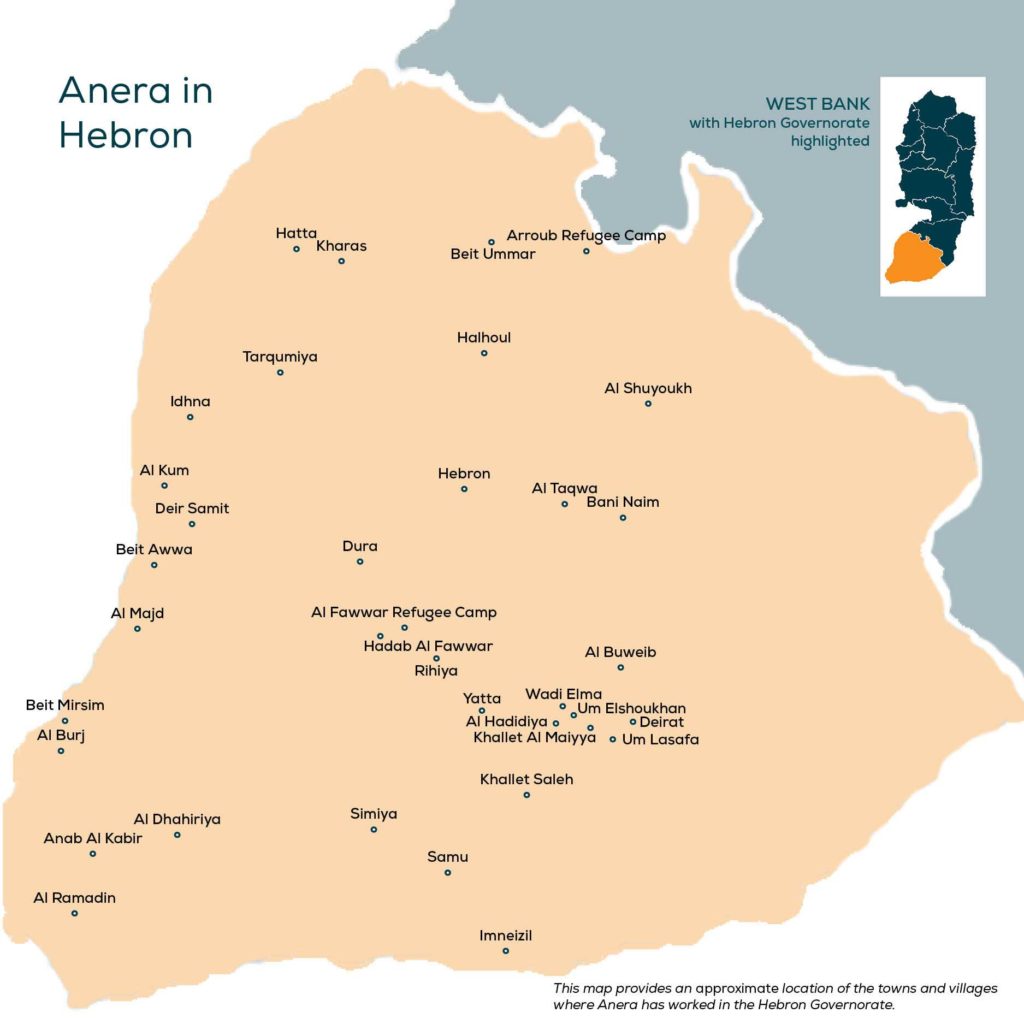

Clean Water for Hot, Dry Hebron
In the last two decades, with funding from USAID Anera has constructed, extended or rehabilitated a slew of water infrastructure in neighborhoods across the city of Hebron, including water cisterns, water and sewage networks and distribution systems, benefiting residents, businesses, and the Hebron Health Clinic.
Southern Hebron has particularly hot, dry weather, resulting in frequent water shortages that affect entire communities. Where water networks are inefficient, unreliable, or non-existent, residents are often forced to buy water from tanker trucks at great expense. Many families struggle to raise livestock due to water scarcity. In an area where many make a living on animal husbandry, this can have a devastating effect on the economy.
Al Ramadin didn’t have a water network – a problem compounded by physical barriers like the separation wall. The wall boxes in the Bedouin village’s 5,000 residents on three sides, and movement out of the remaining side is controlled by the Israeli military. The lack of a water network meant that villagers struggled to raise livestock and make a living. In 2006, Anera constructed and renovated water cisterns and tanks, which now provide clean water in households and farms and protect a continued source of income.
Similarly, the village of Yatta had long been denied access to running water. In 2008, Anera installed an entire water network and extended it to serve Yatta's newest neighborhoods. We also upgraded the water network in the town of Rihiya. In 2014-2015, Anera constructed additional water distribution networks for the villages of Karmil, Ma’in, Al Hadidiya and Khallet Saleh. In 2016, five rural villages in the Yatta area (Khallet Al Maiyya, Um Lasafa, Deirat, Wadi Elma, and Um Elshoukhan) were connected to an existing reservoir through a new water network. For many families, this is the first time they have had clean running water in their homes.
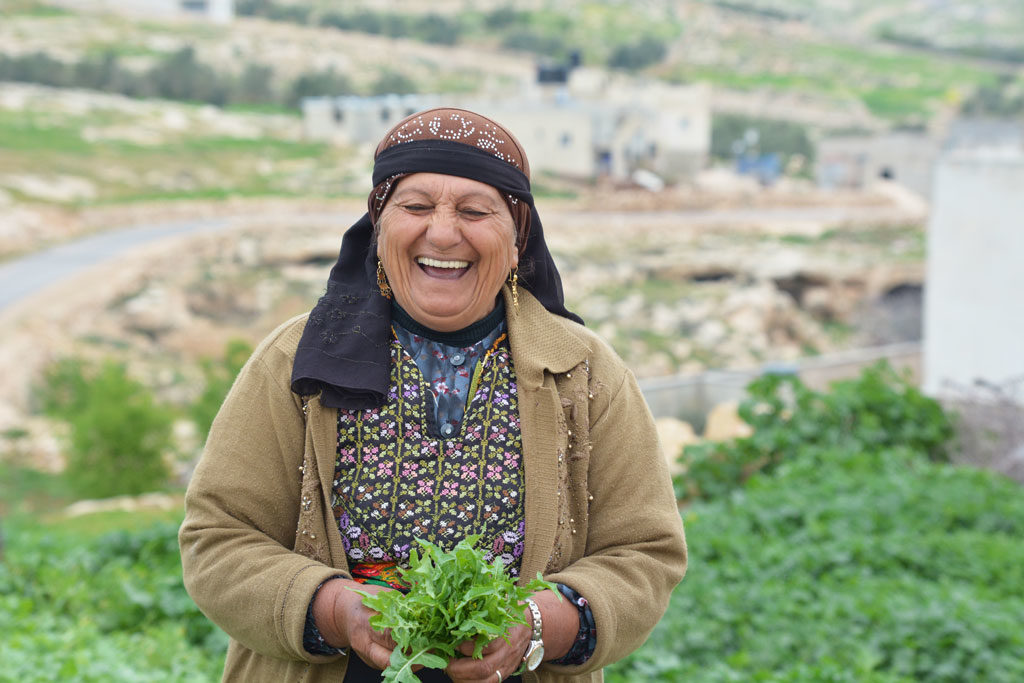

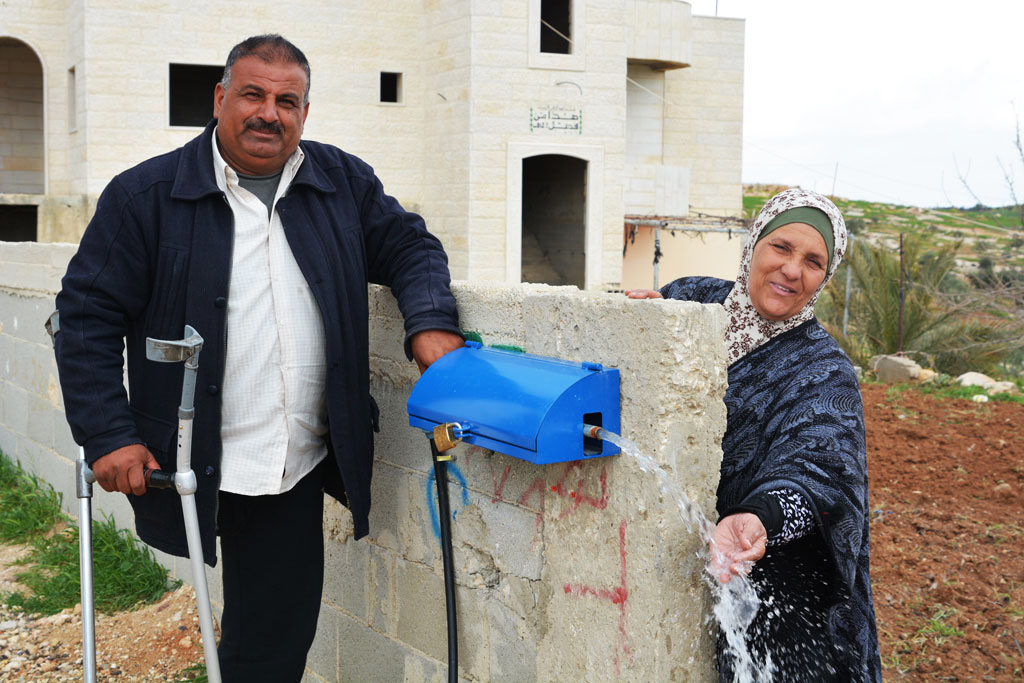

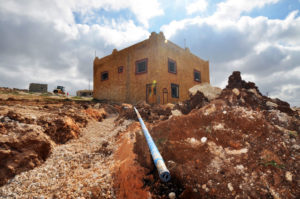



"My kindergarten was finally connected to a water network!” — Lina Al-Ghafi, head of the Khallet Al Maiyya kindergarten
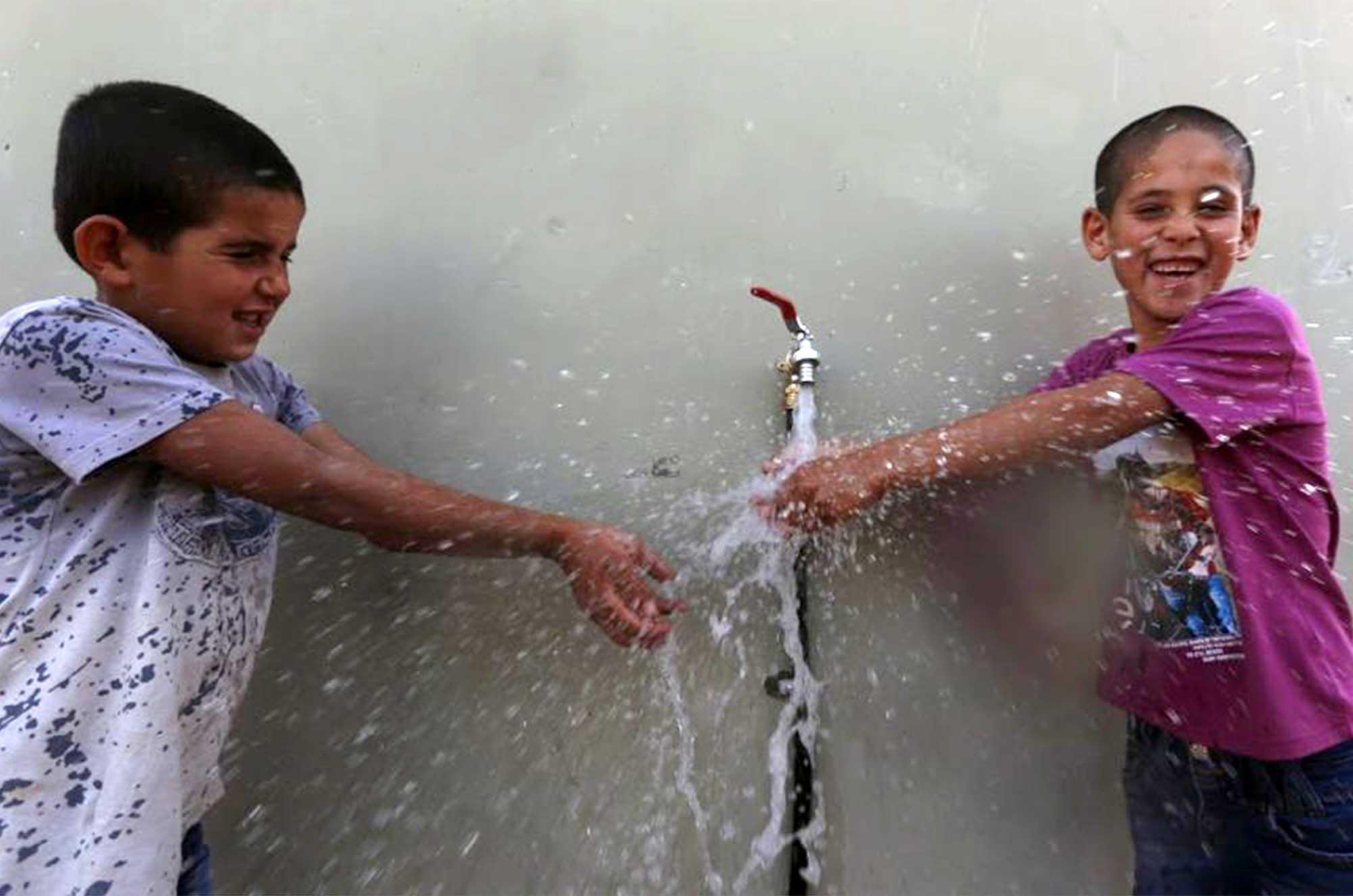

With USAID funding, Anera installed nearly two miles of water networks with house connections and built an elevated water tank with a booster pump in Imneizil, one of the poorest villages in the West Bank. The isolated village is home to a Bedouin community that relies on livestock and agriculture to survive in an almost desert-like climate. The village still has no paved roads and lacks many public services. It is completely enveloped by the Israeli-administered Area C, where Palestinians cannot build anything. Our intervention also included the installation of street lights, so residents feel safer walking at night.


“I endured a lot to get water for my family. I would walk for an hour every other day to the village well and carry back five buckets of water – four on the donkey and one on top of my head!” — Hajja Fatmeh, Imneizil resident
The project has made a big difference in the lives of the 450 people living in this semi-arid area on the southern border of the West Bank, right against the separation wall next to a settlement. Now residents of Imneizil like Hajja Fatmeh can finally access clean water piped straight into their homes.
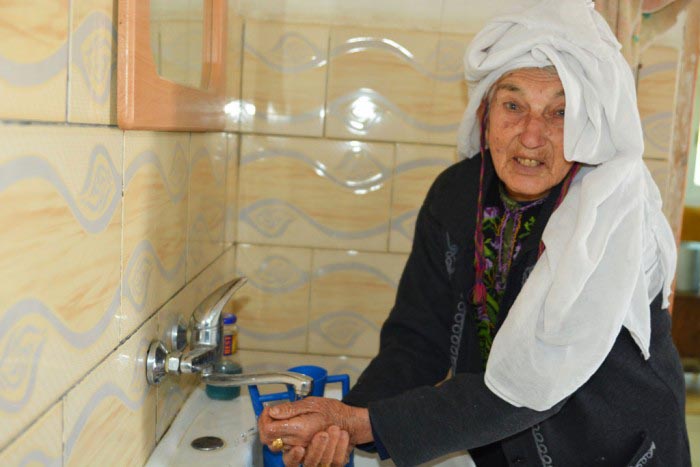



“I have lived my whole life in Imneizel. Many people had to leave because of the lack of water. But this is where I belong. Having water in my home now is a blessing and a reward for all my years of suffering!”
We implemented similar projects in Beit Ummar, Halhoul, Al Shuyoukh, Bani Naim, Al Kum, Deir Samit, Dura, Al Dhahiriya, Beit Awwa and Al Burj.
With few sewage networks in Hebron, residents rely on cesspits for wastewater disposal. Cesspits tend to leak and infiltrate nearby cisterns, and are a major source of pollution and contamination to clean collected water. To combat this problem, Anera enhanced a wastewater treatment plant in the village of Kharas, installing durable pipes that widened the reach of the sewage network to more homes.
In the village of Al Dhahiriya, discharge from Hebron’s sewage network used to run openly through the town and surrounding neighborhoods. School children had to hop across these dirty streams of sewage on their way to school, and illness and pollution spread. Now there are three culverts in the area, constructed by Anera. The culverts here and in Anab Al Kabir also prevent street flooding in the rainy winter season.
In the ancient town of Idhna, residents suffered for many years from a scarcity of clean water due to old, unreliable pipes. In 2006, Anera replaced a water main and a rusted network that had deteriorated in order to prevent further contamination and loss of water. This was a high-priority project because the town had endured many water-related health issues, especially from water pollution.
Expanding Access to Healthcare
In 1988, Anera helped establish one of the main hospitals in the governorate. Al Ahli Hospital - Patient's Friends Society, in the city of Hebron. It is a key partner in Anera's medical donations program in the area.
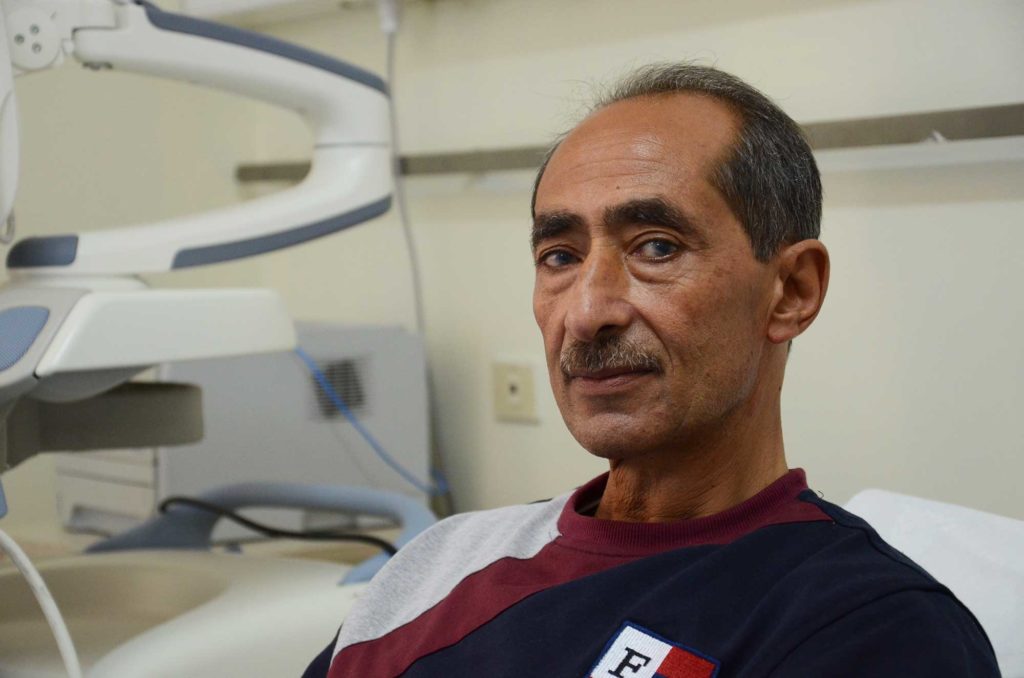



“Anera is a dear name to my heart. Not only has it helped me with my recent situation but, when I was much younger, it was actually the only organization to help me fund my very first research exploring the post-traumatic impact of the First Intifada on children. It is an organization to lean on.” — Raef
Nestled down a quiet narrow street in the Old City of Hebron, the Hebron Charitable Medical Center has become an iconic medical care facility in the area since its establishment in 1986. Checkpoints have stifled the local Palestinian economy and make getting in and out of the area very difficult. Located in the heart of the Old City, the charitable health clinic gives impoverished people access to quality, affordable health care. It is another essential local partner in our medical donations program. Anera regularly delivers medicines to the clinic, supplying up to 70 percent of their stock.
Eleven kilometres southwest of Hebron City, lies the city of Dura. There is no hospital in Dura, and the population of 36,000 depend on the charitable center run by the Palestine Red Crescent Society. The 24-hour clinic relies on donated medications distributed by Anera for its stock to provide treatment for their generally low-income patients.
Charitable health facilities in localities across the governorate depend on Anera’s donations of medicines and medical supplies, including the Palestinian Medical Relief Society clinic in Beit Ummar, the charitable clinic in village of Bani Naim, and the lone hospital serving the 30,000 residents in the city of Halhoul.
In western Hebron, a 40-minute drive from Hebron City, lies the town of Beit Awwa. In the past, the 17,000 residents of Beit Awwa had only one medical clinic – it was old, run-down, and limited to only mother and child care. It also fell short of the minimum standards required by the Ministry of Health. Staff did not even have access to water or even a hand basin in the emergency room. Staff members had to use the communal bathroom to wash their hands. In 2012, Anera replaced the old medical clinic with a new, fully-equipped clinic, large enough to serve all members of the community. The new clinic has two general practitioner rooms, a pharmacy, laboratory, family-planning clinic, and mother and child care center. Anera has also provided clinic staff with health education trainings on the latest developments in their fields.
Similarly, Anera has expanded and upgraded the Hamida Al Najadah Clinic, and rehabilitated Al Buweib Child and Mother Care Clinic, the Beit Mirsim Child and Mother Care Clinic and Al Simia Child and Mother Care Center.
The Palestine water crisis also affected clinics and hospitals. In Al Dhahiriya, Yatta, Rihiya, Beit Awwa, Beit Mirsim, Simiya and Al Buweib, Anera rehabilitated water cisterns and installed water tanks, pumps, filters and heaters, as well as window fixtures and toilet facilities. Now proper health care and good hygiene are possible thanks to clean water and sanitation facilities.
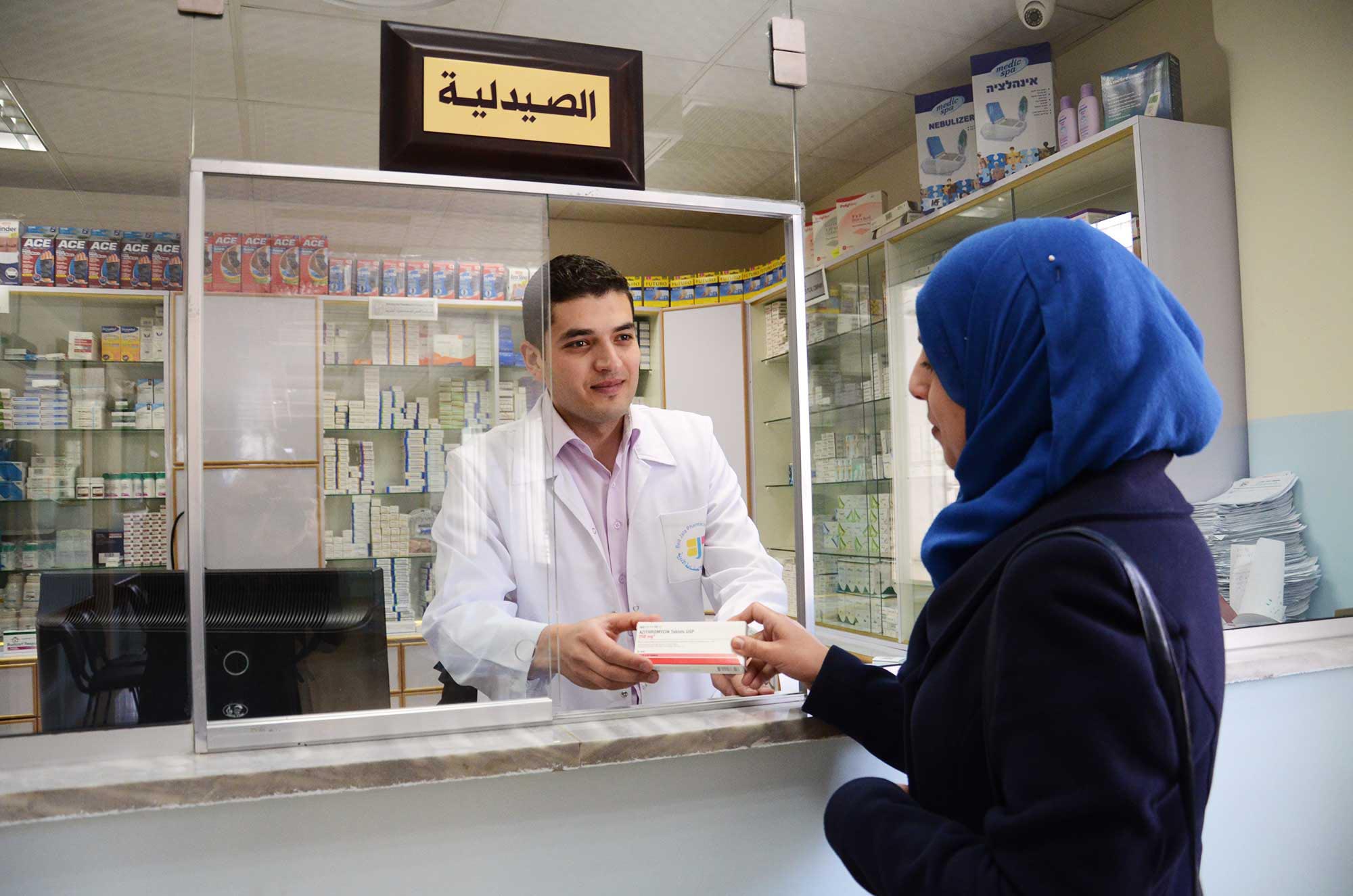

In Idhna, a town of 20,000 people in western Hebron, Anera rehabilitated and remodeled the Idhna Government Clinic in 2012 as part of a USAID-funded program. Anera added a new floor to house a laboratory, pharmacy and vaccination room. The medical center is essential as it is the town’s only emergency medical care provider. The project also created many much-needed jobs in the town.
Anera also expands access to medicines in the town through its medical aid program. Gastrointestinal infection is common in the area, often due to water-borne parasites. By supplying critical medicinal and medical supplies, we help Idhna’s health workers effectively treat a range of diseases and infections.
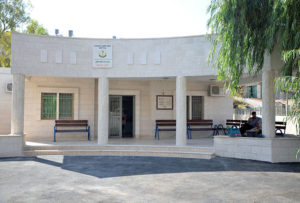

Hebron School Upgrades Enhance Education
In 2010, Anera completed renovations of Al-Hussein Bin Ali Secondary School for Boys in the city of Hebron. The institution had a long history but was in dire need of repairs. The school’s first floor was built during the British Mandate in 1947 and a second floor was soon added, inaugurated by the late King Hussein during the period when Jordan ruled over the West Bank. “Most of Hebron’s leaders today graduated from this school,” Abu Sneinih, the principal of the Hebron high school, says with pride.
Anera capped the renovation with the planting of more than a dozen 30-year-old olive trees on the grounds. “You know, in Palestine olive trees are a symbol of peace,” a smiling Abu Sneinih said as he watched the first trees being lowered into the ground. “The trees provide a place of calm and relaxation for our students and visitors from the Palestinian community around us.”
In the village of Al Taqwa, Anera rehabilitated and expanded the school, constructing two new floors and adding seven classrooms, three educational rooms, a library, and a social worker’s room, an exterior elevator for disabled students and a playground. The school can now accommodate 400 students.
And in the city of Halhoul we renovated the Maneen (Al Isra') Primary Girls' School.
Schools in arid southern Hebron have often lacked adequate water infrastructure. The village of Rihiya suffers from a high rate of unemployment (60%) and health complications among children due to malnutrition and contaminated water. Schools, such as Rihiya Secondary Girls' School, suffered greatly from the water shortage.
To alleviate this problem, Anera renovated the water and sanitation facilities of the Rihiya school in 2009. Further work included the renovation of an existing drinking fountain and the installation of a new one, and school facilities like the kitchen and toilets were repainted and freshened up. The school, which houses 400 students and 30 teachers, serves a sizable portion of the village’s residents.
The school in the village of Imneizil, located in the far south of the governorate, suffered from similar water infrastructure problems. Anera installed a water network in the village for the first time and built a water tank and installed water pipes and connections to homes and institutions like the school.
Eman is a bright 8th grader in Imneizil’s only school. Before Anera's intervention, Eman and her classmates needed to fetch water just to use the school bathroom.


“I had to fill a bucket of water from a nearby well and put it at the bathroom’s entrance. But the water was not always clean. Some days, I would just wait to go home to use the bathroom.”
Unsurprisingly, urinary tract infections were common among the students. Now that Eman and her peers enjoy a steady flow of clean water in their school, she is a more focused and happy student.
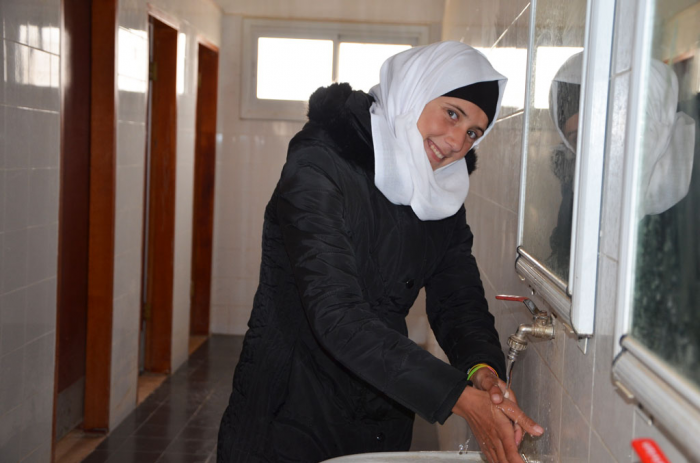

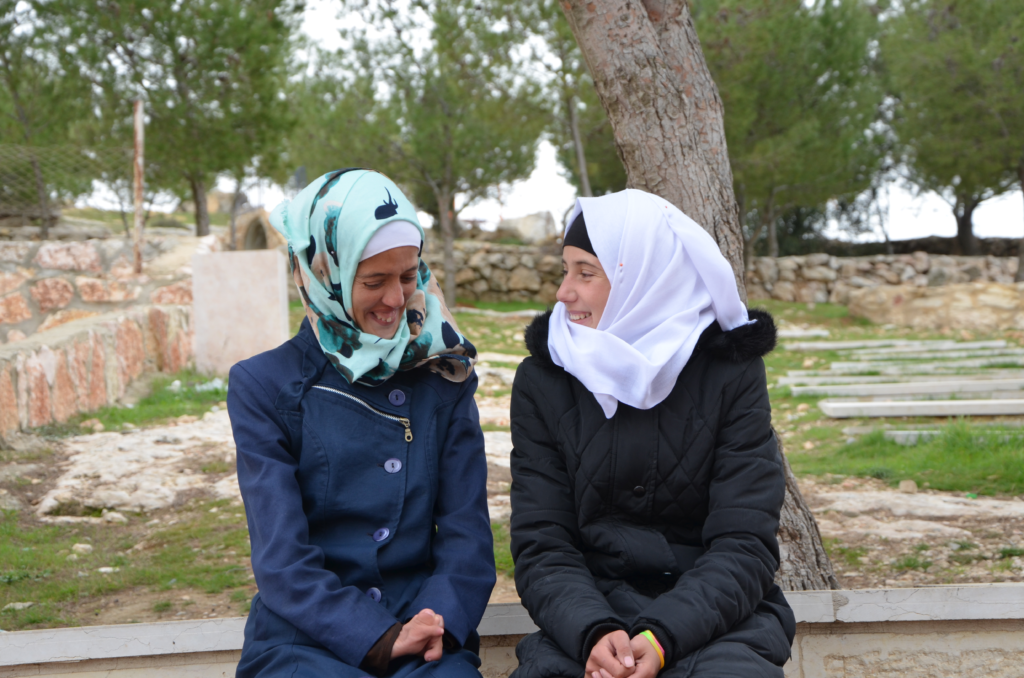

The following year, Anera added classrooms and renovated water and sanitation facilities in a coed school in neighboring Anab Al Kabir. The school experienced a high drop-out rate, in part because students had to travel to another town to attend high school. The added classrooms enable students to continue on to high school in the same location, removing one barrier to education.
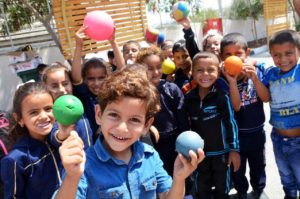

In 2016, Anera added two additional floors in Hatta’s co-ed elementary school so it can accommodate more students. We also added a preschool, five additional classrooms, computer and science labs, a library, handicap-accessible facilities, a playground, and solar panels to make the school more energy efficient. Like Anab Al Kabir, the school system previously had a high dropout rate — especially among girls — because students were forced to enroll in schools in neighboring villages, adding an additional financial burden for families. The expansion allowed the school to add two more grades, enabling students to continue their studies locally up to the eighth grade, allowing girls to continue their studies instead of dropping out.
Remote Villages in Hebron Governorate Welcome New Preschools
Through its early childhood development program, Anera has renovated, furnished and equipped seven preschools in southern Hebron and trained scores of teachers in child development and child-centered education through an intensive training program.
Anera preschool renovations create bright, open learning spaces for children and include child-friendly toilet facilities and shaded outdoor playgrounds. We fill classrooms with locally-made, Anera-designed furniture, educational indoor and outdoor games and toys, as well as books.
Parents are also actively encouraged to participate in special training sessions to help them improve their knowledge and awareness of the physical, social, emotional, and cognitive needs of their children.
Our Hayya Naqra, or "Let's Read," initiative has engaged hundreds of children and parents in schools in the villages of Al Burj, Al Ramadin, Beit Awwa, Idhna, Hadab Al Fawwar, Beit Mirsim, and Anab Al Kabir. Children receive reading bags filled with with books, coloring books, colored pencils, and a handy pamphlet for parents on the importance of reading to their children.
In the remote and under-served town of Idhna, the preschool operates on a shoe-string budget. The facilities were worn down and unsafe. With funding from Dubai Cares, Anera added windows, widened and repainted classrooms, provided new curtains and Anera-designed furniture, set up a reading corner with a new library of books, and installed new toilets and playground equipment. In addition to school infrastructure, Anera trained and mentored the teachers. Since Anera began working with Idhna Preschool in 2013, enrollment doubled, with 95 children now attending.
In 2014 Anera, together with the Ministry of Education, announced the establishment of the first two preschools — both in Hebron Governorate — to be incorporated into the Palestinian public school system. Anera also renovated these preschools, in Anab Al Kabir and Beit Mirsim, adding classrooms and updating other rooms and the water and sanitation facilities. Like many remote villages in the Hebron area, unemployment is rampant and few can afford to pay tuition or transportation fees to send their children to preschool. These two isolated villages have suffered from poverty and inadequate health and education infrastructures. The new preschools are free of charge and serve communities that have no childcare facilities.
We have also renovated preschools in Al Ramadin, Al Burj and Hadab Al Fawwar. In the early 2020s, Anera built a new preschool in the town of Samu.
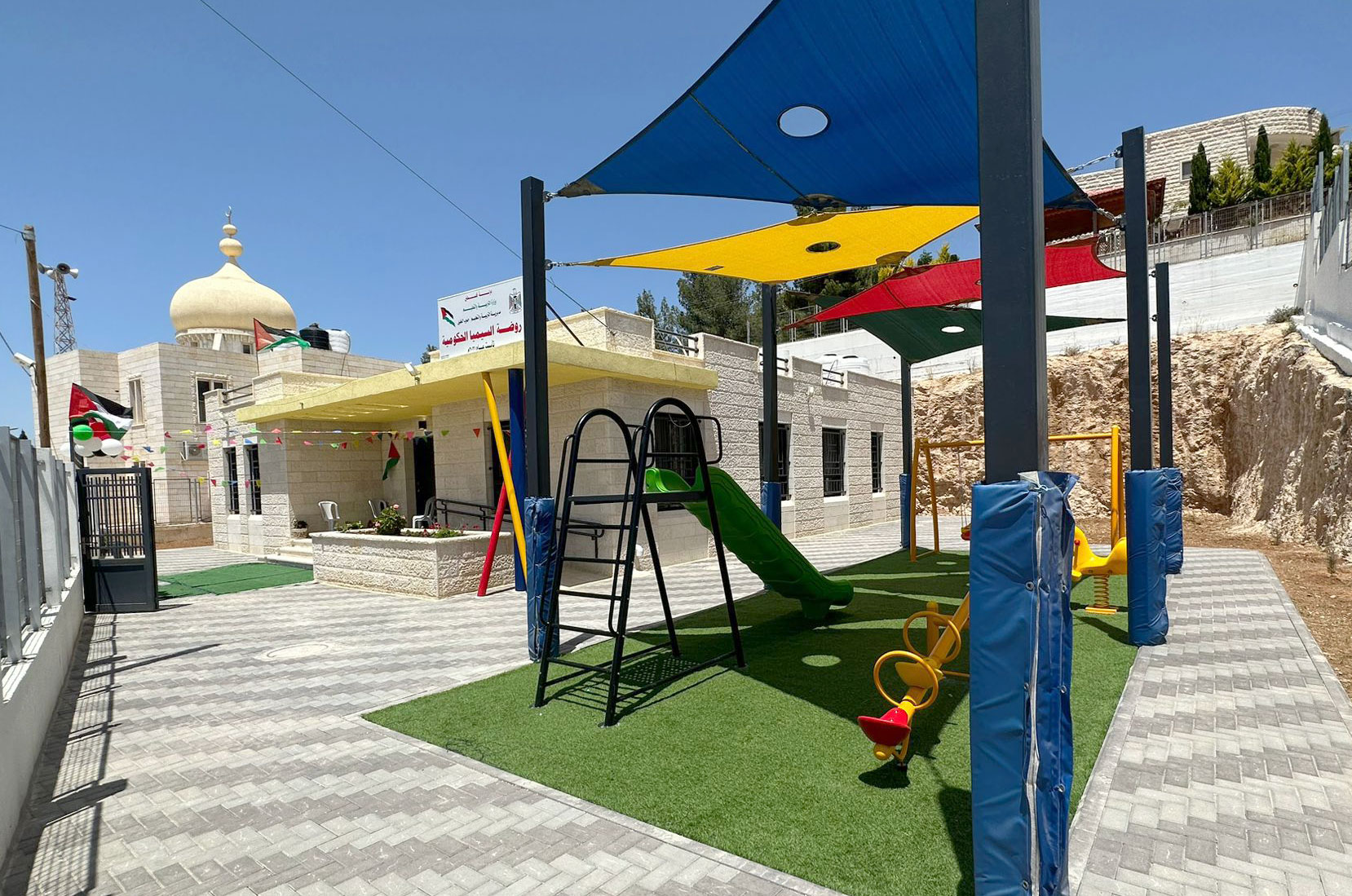

Building Up Community Infrastructure Across Hebron
Over the decades, Anera has invested in infrastructure for remote populations across Hebron. In 1997, Anera worked with the Hebron municipality to build the Hebron Industry Complex, housing 48 workshops and removing polluting industries from the town center. Anera has also supported the Halhoul Produce Market, the quarry in Bani Naim, and land reclamation initiatives across the governorate. In 2010 Anera expanded a playground in the Arroub Refugee Camp, adding a new jungle gym.
In the early 1990s, Anera invested $110,000 in Hebron University to help establish the soil and water lab. Today in 2018, the lab is one of the busiest in the department of agriculture. Not only do students and professors use it to help with their work and research, but it’s also open to the local community so farmers can run tests on soil and water samples.
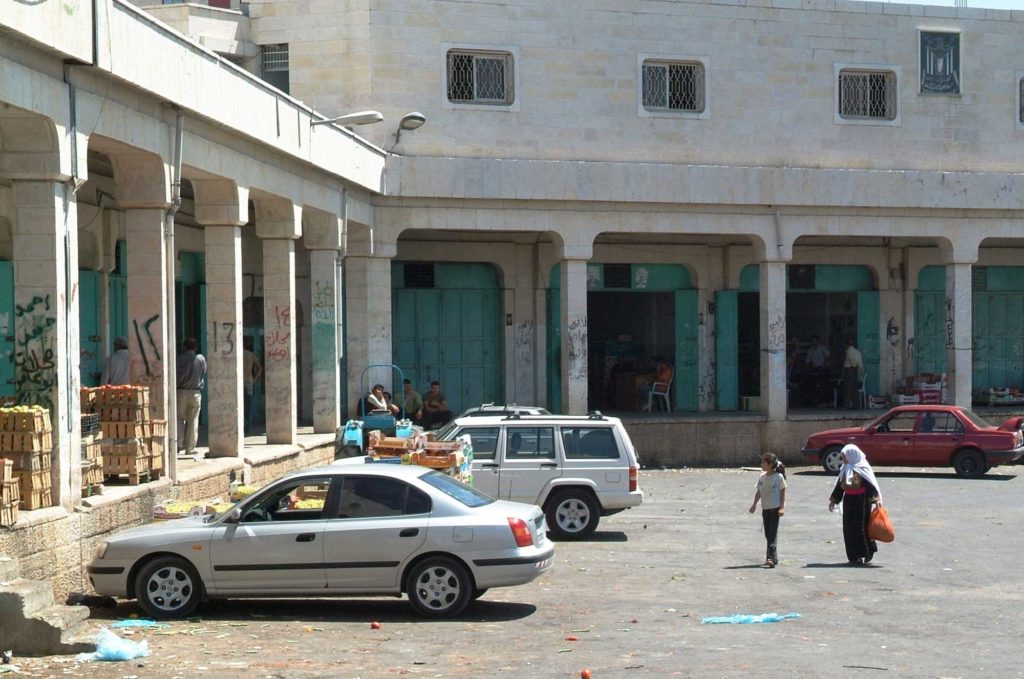

Anera has also supported measures to protect the environment and support agriculture. We introduced improved methods of pest management, particularly in eastern Hebron. In the 1980s, Anera supported a project to eradicate phylloxera in Hebron. Anera partnered with a farming cooperative the town of Bani Naim, east of the city of Hebron, offering financial and technical support to expand the farmers’ production and marketing capabilities and eventually establish the first local grapevine nursery.
The outbreak of the First Intifada in 1987 led to a boycott of imports, which left a huge shortage of dairy products in the West Bank. Anera donors helped agricultural cooperatives, including one in Hebron, establish dairies, creating a market for dairy farmers, and promoted best practices in dealing with milk-based products. The cooperatives collected milk from local farmers, generating job opportunities for the farmers, who in turn contributed to producing locally a product that benefited hundreds of families.
In more recent years, Anera installed the first paved roads in Imneizil. Situated in the far south of Hebron, it is one of poorest villages in the West Bank. The poverty rate is over 50 percent. The village had no asphalted roads, street lighting, water system, proper electrical system, telephone network, health clinic or sewage system. Life threatened to become impossible for the village's 450 residents. With USAID funding, Anera installed roads with solar-powered street lights, including at the entrance to the village and added sidewalks around the school.
